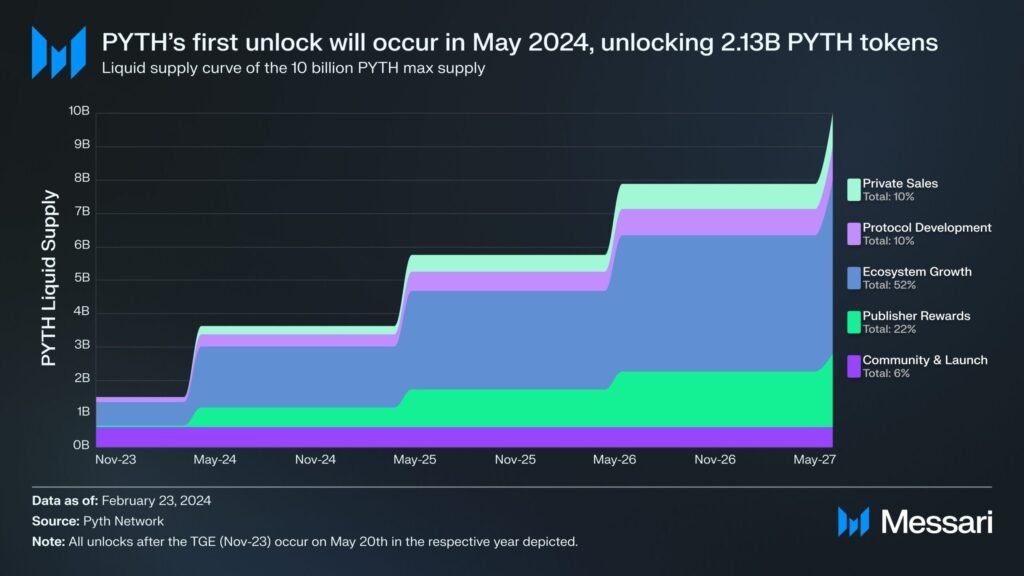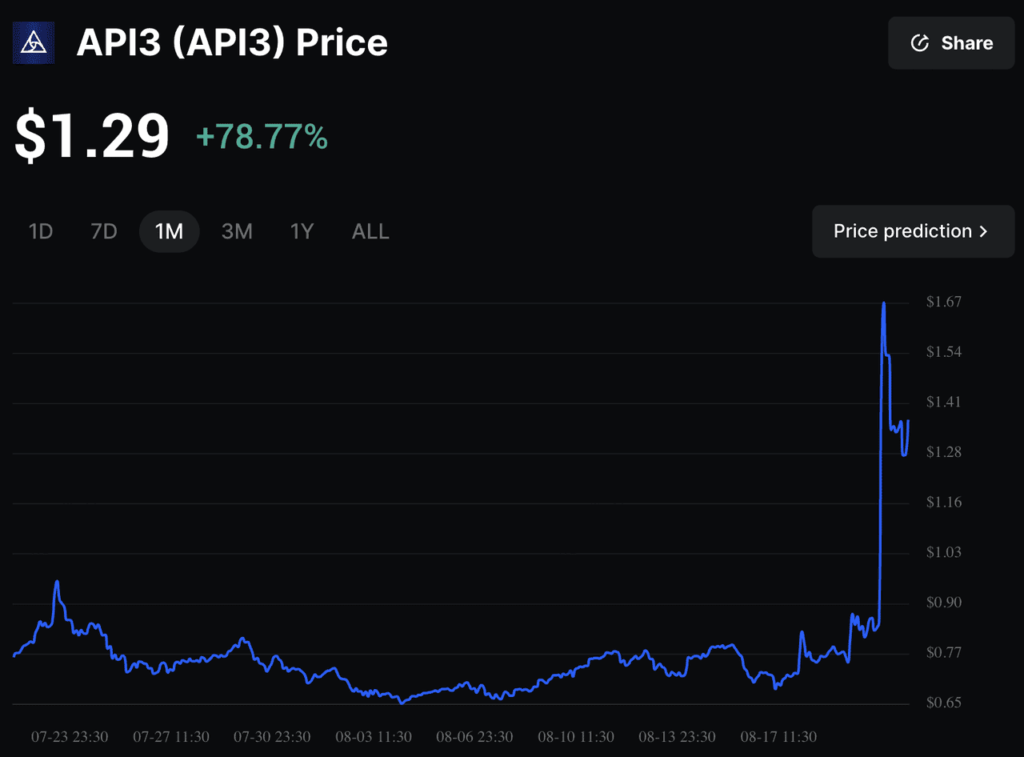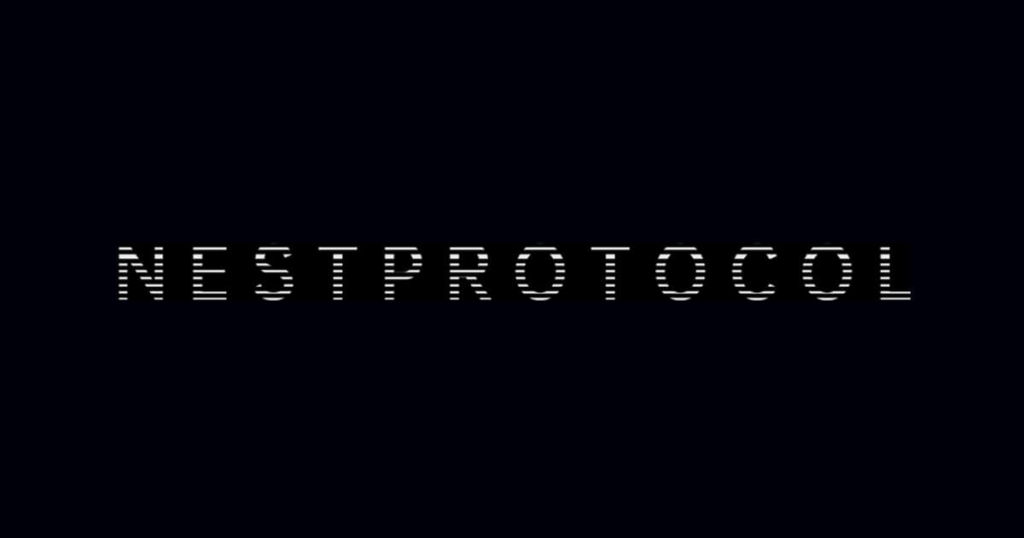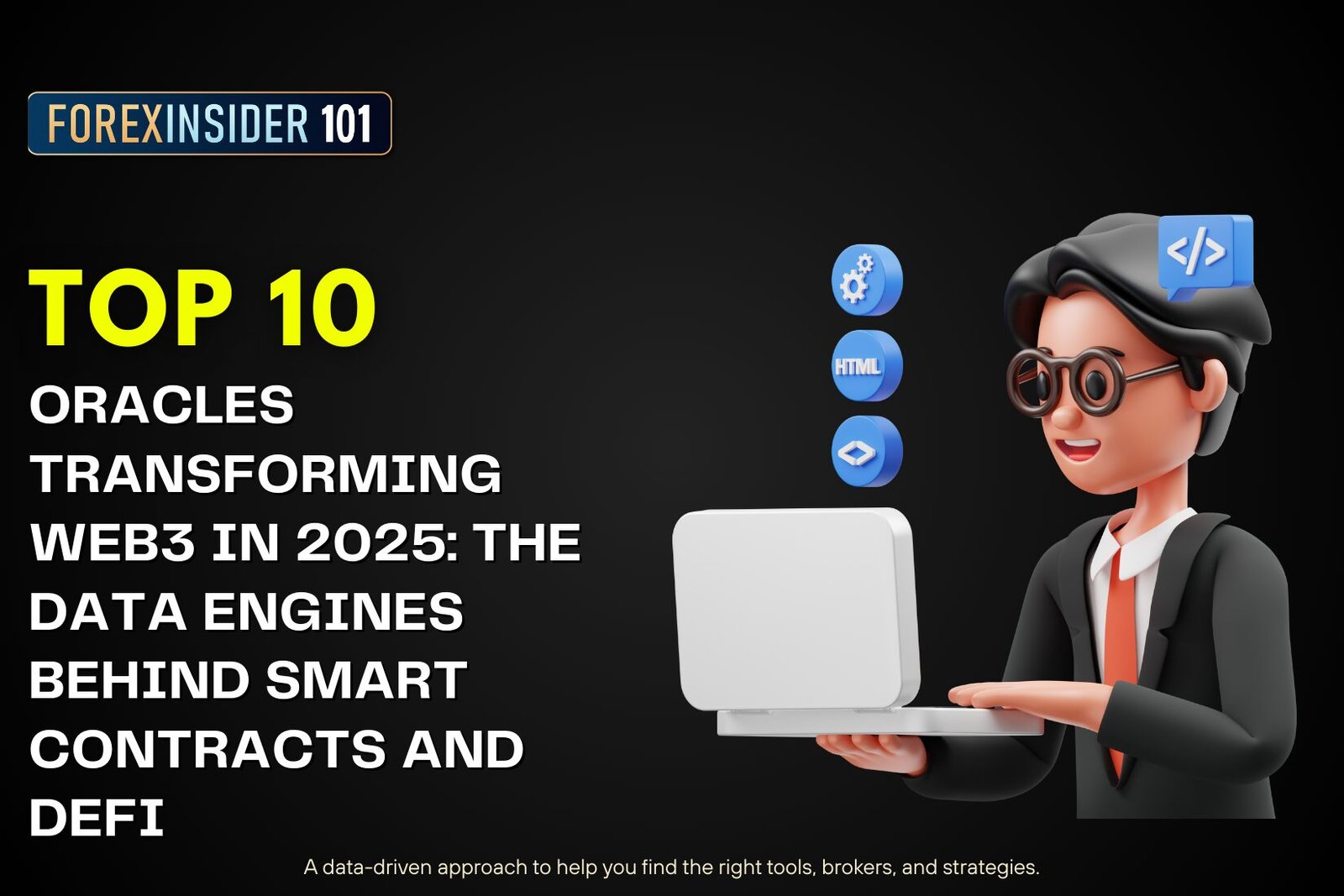Top 10 Oracles : Web3 has reached a stage where smart contracts no longer exist in isolation — they need to interact with data from the real world. This is where blockchain oracles step in. Acting as bridges between decentralized networks and off-chain information, oracles allow smart contracts to process real-time market prices, weather updates, sports scores, supply chain data, and much more. Without them, decentralized finance (DeFi), NFT ecosystems, and automated applications would be incomplete.
As 2025 unfolds, oracles are not just complementary technologies — they are becoming the foundation of the Web3 economy. This article explores the Top 10 Oracles Transforming Web3 in 2025, highlighting their role in building trust, scalability, and efficiency in the decentralized world.
Top 10 Oracles Transforming Web3 in 2025
1. Chainlink (LINK) – Top 10 Oracles

Source: The block
Chainlink continues to dominate the oracle market with its robust decentralized network. In 2025, it remains the most widely adopted oracle solution across DeFi, powering lending platforms, derivatives markets, and insurance protocols. Chainlink’s Cross-Chain Interoperability Protocol (CCIP) has expanded multi-chain communication, enabling seamless data sharing across Ethereum, Solana, Polygon, and other blockchains. Beyond finance, it now powers real-world tokenization, such as RWA (real-world assets), by bridging traditional finance data into decentralized applications.
2. Band Protocol (BAND) – Top 10 Oracles

Source: Shutterstock
Band Protocol positions itself as a fast and flexible oracle solution that leverages Cosmos’ interoperability. Its bandwidth-efficient design makes it a go-to choice for projects requiring lower costs and faster data delivery. In 2025, Band Protocol has expanded to serve gaming ecosystems, NFT marketplaces, and cross-chain DeFi protocols. By focusing on scalability, it has carved a niche among developers who need oracles capable of integrating diverse datasets with minimal latency.
3. Pyth Network (PYTH)

Source: Messari
Pyth has grown rapidly thanks to its strong presence on Solana and partnerships with top exchanges. Known as the “oracle for traders,” Pyth delivers high-frequency, low-latency financial data directly from institutional sources. In 2025, it continues to serve as the backbone for decentralized trading platforms, derivatives markets, and algorithmic strategies. With its growing network of data publishers, Pyth has become indispensable for developers seeking reliable financial data in real time.
4. API3 (API3)

Source: BingX
API3 is pioneering first-party oracles, where data providers deliver information directly to the blockchain without intermediaries. This design enhances trust and reduces manipulation risks. In 2025, API3’s Airnode technology has gained adoption among enterprises and governments exploring blockchain integration. From weather reports to IoT data, API3 ensures smart contracts receive verified and tamper-proof information, making it a leading player in mission-critical sectors such as insurance and logistics.
5. DIA (Decentralized Information Asset)
DIA has made its mark by emphasizing transparency and community-driven governance in oracle networks. In 2025, DIA offers customizable data feeds where users can request niche datasets — ranging from NFT floor prices to ESG (environmental, social, and governance) data. This makes DIA highly relevant for emerging areas like sustainable finance and green crypto projects. Its open-source framework ensures that data sourcing and validation remain fully auditable, appealing to developers who prioritize verifiability.
6. Witnet – Top 10 Oracles

Source: Coin Market Cap
Witnet is designed with decentralization at its core, focusing on creating trustless and censorship-resistant oracles. In 2025, Witnet is increasingly used for applications requiring verifiable randomness, such as lottery systems, gaming mechanics, and NFT minting. Its unique approach ensures that no single party can manipulate data, strengthening fairness in decentralized ecosystems. Witnet’s steady growth reflects the rising demand for decentralized randomness in Web3 applications.
7. Provable (formerly Oraclize)

Source: SD
Provable has long been one of the earliest oracle providers, and in 2025, it continues to serve enterprise-grade solutions. Its data authenticity proofs provide cryptographic evidence that the data delivered to blockchains is genuine and untampered. This makes it especially valuable in legal, compliance, and enterprise blockchain projects. By supporting APIs across multiple industries, Provable remains a trusted oracle for applications where data integrity is mission-critical.
8. Tellor (TRB) – Top 10 Oracles

Source: IQ.wiki
Tellor has positioned itself as a fully decentralized oracle solution where data reporters are incentivized through a staking-and-reward model. In 2025, Tellor is widely used in DeFi protocols requiring custom data feeds, such as governance metrics and niche market prices. Its permissionless structure allows anyone to become a data reporter, making it resilient and censorship-resistant. Tellor’s steady adoption reflects its strength as a community-driven oracle network.
9. Umbrella Network (UMB)

Source: Altcoinbuzz
Umbrella Network brings scalability and cost-efficiency to oracle services by using a Merkle tree-based system that aggregates data before anchoring it to the blockchain. In 2025, it appeals to smaller dApps and startups looking for affordable oracle services without compromising security. Umbrella’s emphasis on accessibility ensures that even projects with limited resources can integrate reliable real-world data into their smart contracts.
10. Nest Protocol (NEST)

Source: CS
Nest Protocol stands out with its unique game-theoretic oracle mechanism, where data providers and validators interact in an open market to ensure data accuracy. In 2025, Nest Protocol has expanded beyond DeFi into predictive markets, insurance, and blockchain-based AI models. Its model ensures that incorrect data is penalized, creating incentives for accuracy. As AI and Web3 merge, Nest’s structure makes it a forward-looking oracle solution.
Comparison Table: Top 10 Oracles in 2025
| Oracle Project | Strengths | Key Use Cases | 2025 Focus Areas |
|---|---|---|---|
| Chainlink (LINK) | Widest adoption, multi-chain CCIP | DeFi, RWA tokenization | Cross-chain communication |
| Band Protocol (BAND) | Fast, low-cost, Cosmos-based | Gaming, NFTs, DeFi | Scalability & flexibility |
| Pyth Network (PYTH) | High-frequency financial data | Trading, derivatives | Institutional data sources |
| API3 (API3) | First-party oracles, Airnode tech | Insurance, logistics, IoT | Enterprise & gov adoption |
| DIA | Transparent, community-driven | ESG, NFT pricing, DeFi | Sustainable finance |
| Witnet | Censorship-resistant, randomness | Gaming, lotteries, NFTs | Verifiable randomness |
| Provable | Authenticity proofs for data | Legal, compliance, enterprise | Data integrity & security |
| Tellor (TRB) | Permissionless, decentralized reporters | Custom feeds, DeFi governance | Censorship resistance |
| Umbrella Network | Affordable, scalable Merkle tree system | Startups, small dApps | Cost-efficiency |
| Nest Protocol | Game-theoretic validation model | Insurance, prediction markets | AI & Web3 synergy |
Conclusion
The Web3 revolution in 2025 is powered by oracles that bring real-world information into decentralized ecosystems. Each oracle provider contributes differently — some focus on scalability, others on transparency, speed, or decentralization. Together, they form the invisible infrastructure that ensures smart contracts are not only automated but also intelligent and responsive to real-world events.
As DeFi expands, NFTs evolve, and AI integrates into blockchain, the role of oracles will only grow stronger. For developers, investors, and users, understanding the Top 10 Oracles Transforming Web3 in 2025 is essential for navigating the future of decentralized applications.



